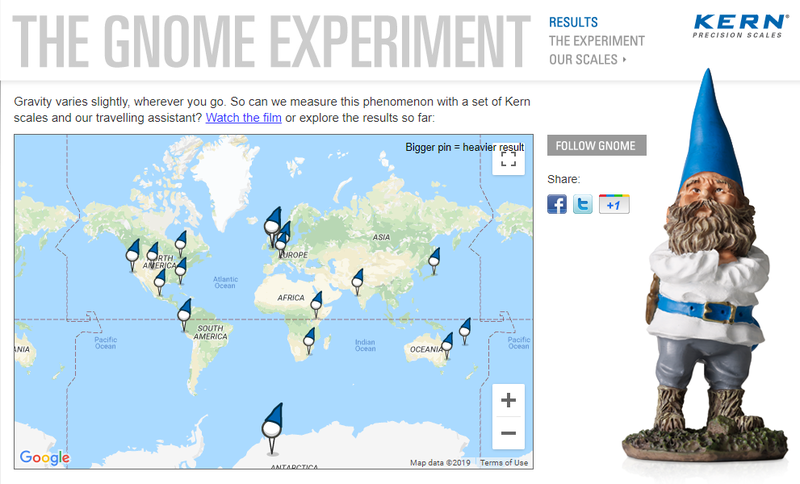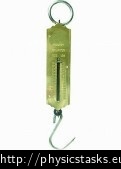Difference between revisions of "Weight Variation by Latitude"
Tom Bishop (talk | contribs) |
Tom Bishop (talk | contribs) |
||
| Line 115: | Line 115: | ||
==Addendum== | ==Addendum== | ||
| − | When one examines the properties of the air they will find that other elements too are related to temperature, pressure, and humidity | + | When one examines the properties of the air they will find that other elements too are related to temperature, pressure, and humidity; such as air viscosity and thermal diffusivity -- all of which may affects the operation of scales. It is due to the complex nature of the air that scale manufacturers and metrologists recommend calibrating often, whether a scale is indoors or outdoors. Indeed, a company's failure to calibrate its scales in certain fields can result in fines and even legal action. |
Adopting this basic and reasonable level of scrutiny, an experiment which is based on bringing uncalibrated scales to different environments and then looking for differences of a fraction of one percent of a body's weight must only be questioned for validity. | Adopting this basic and reasonable level of scrutiny, an experiment which is based on bringing uncalibrated scales to different environments and then looking for differences of a fraction of one percent of a body's weight must only be questioned for validity. | ||
Revision as of 11:38, 1 July 2019
Weight Variation by Latitude refers to the claims that scales have measured masses to weigh slightly less near the equator and slightly more near the polar areas. It is asserted that this is due to a combination of the centrifugal effect from the rotation of the earth and the increased mass at the equator.
Upon assessment of the experiments supporting this, it is found that these experiments are conducted with the scale and test body exposed to the surrounding atmosphere. A scale is calibrated for one area and then taken to another area, uncalibrated. Measures are not taken to isolate the test body and the measuring device from the influences of the environmental atmosphere. It is known that pressure and humidity affects scales. It is also known that that pressure is greater at the poles and lesser at the equator. It is further known that pressure is greater at lower altitudes near sea level and lesser at higher altitudes. Humidity likewise has a relationship with between latitudes and altitudes.
Andrew Huszczuk, Ph.D. writes:
“ Would you take a medication knowing that a pharmacy used an uncalibrated scale to weigh its ingredients? Would you board a plane knowing that the fuel or altitude gauges are not calibrated at frequent intervals?
In these and thousands of other applications scientific bases and rules of metrology must be obeyed to assure chaos-free operation of modern societies. To scrutinize performance of measuring devices a process of calibration must be carried out by means of applying a known standard and getting back a correct reading. ”
Scales Affected by Atmosphere
From Drift in Measurements with Analytical Balances we read:
“ Pharmaceutical laboratories and bioscience research institutes make extensive use of analytical balances that are highly sensitive. These analytical balances are greatly affected by their environment and also by the way they are installed and handled. ”
One precision scale manufacture lists many factors which can affect a scale:
Factors That Can Affect Your Scale’s Accuracy
“ Differences in air pressure – Scales can provide inaccurate measurements if the air pressure from the calibration environment is different than the operating environment. ”
If the air pressure from the calibration environment is different than the operating environment, it will effect the scale. Also listed on the page are temperature and humidity which can affect the operation of a precision scale.
Bathroom Scales
Inconsistent scale readings are also readily seen at home in bathroom scales. If left uncalibrated, the reading will vary wildly.
Can I Trust My Bathroom Scale?
“ A dietician who weighed herself 15 times over the course of a day found that she’d “gained” seven pounds. ”
Kern Gnome Experiment
The precision scale manufacturer Kern conducted a public test of the variation of weight by latitude, showing that weight changed when a ceramic gnome and one of its precision scales were sent to members of the public at different latitudes:
Website: http://gnome-experiment.com/
Scale Not Calibrated
The scale was calibrated in Germany and then sent to different areas:
https://www.chemistryworld.com/news/gnomadic-experiment/4924.article
“ Kern the gnome and a Kern and Sohn balance, calibrated at the firm’s laboratory in Balingen, Germany, are travelling around the world to anyone who requests a visit in a specially designed flight case. Gloves and cleaning implements also come along for the ride, so the mass of the gnome isn’t altered by dirt or over enthusiastic cleaning.
Several factors affect the gravitational field at different locations on the Earth, for example the closer Kern gets to the equator, the less he should weigh because the velocity of the Earth’s spin at the equator (1670km/hr) counteracts the force of gravity by up to 0.3%. This weight loss will also be increased by the equatorial bulge that means Kern would be further from the centre of our planet and gravity is proportional to the inverse square of the distance between two objects. ”
“ Kern travels in a reinforced case containing himself and a Kern EWB 2.4 Scale calibrated according to local gravity in Balingen, Germany, to ensure any weight change he encounters on his travels shows up. ”
Procedure
Members of the public were instructed to place the gnome onto the scale and to record their results:
Spring Scale Experiment
The Spring Scale Experiment shows a similar methodology of calibrating in one area and taking to another:
http://physicstasks.eu/930/spring-scale-on-the-pole-and-on-the-equator
“ We calibrated a spring scale on the North Pole and then we moved the scale to the Equator.
Does the spring scale give the same readings as on the pole? Give reasons. ”
The book Practical calculations for engineers describes the same method:
“ Suppose such a spring balance be made and calibrated in London by suspended weights which are mutiples or sub-multiples of the point weight. Then if the balance and the standard pound weights were taken to different latitudes, it would be found that the balance would show increasing readings for the same weight in passing from the equator to the poles. ”
Worldwide Air Pressure Gradient
The following sources explain that air pressure has a relationship with latitude, being lower near the equator and greater near the poles:
World Distribution of Sea Level Pressure
“ The atmosphere exerts a pressure of 1034 gm per square cm at sea level. This amount of pressure is exerted by the atmosphere at sea level on all animals, plants, rocks, etc.
Near the equator the sea level pressure is low and the area is known as equatorial low. Along 30° N and 30° S are found the high-pressure areas known as the subtropical highs. Further pole wards along 60° N and 60° S, the low-pressure belts are termed as the sub polar lows. Near the poles the pressure is high and it is known as the polar high. ”
and further down:
“ Polar High Pressure Belt
- The polar highs are small in area and extend around the poles. - They lie around poles between 80 – 90° N and S latitudes.
Formation
- The air from sub-polar low pressure belts after saturation becomes dry. This dry air becomes cold while moving towards poles through upper troposphere. - The cold air (heavy) on reaching poles subsides creating a high pressure belt at the surface of earth. ”
https://en.wikipedia.org/wiki/Polar_High
“ Polar High
The polar highs are areas of high atmospheric pressure around the north and south poles; the north polar high being the stronger one because land gains and loses heat more effectively than sea. The cold temperatures in the polar regions cause air to descend to create the high pressure (a process called subsidence), just as the warm temperatures around the equator cause air to rise to create the low pressure intertropical convergence zone. ”
Worldwide Humidity Gradient
Humidity, like temperature and pressure, has a relationship with the equator as well:
https://en.wikipedia.org/wiki/Humidity#Climate
“ The most humid cities on earth are generally located closer to the equator, near coastal regions. Cities in South and Southeast Asia are among the most humid. Kuala Lumpur, Manila, Jakarta, and Singapore have very high humidity all year round because of their proximity to water bodies and the equator and often overcast weather. ”
Addendum
When one examines the properties of the air they will find that other elements too are related to temperature, pressure, and humidity; such as air viscosity and thermal diffusivity -- all of which may affects the operation of scales. It is due to the complex nature of the air that scale manufacturers and metrologists recommend calibrating often, whether a scale is indoors or outdoors. Indeed, a company's failure to calibrate its scales in certain fields can result in fines and even legal action.
Adopting this basic and reasonable level of scrutiny, an experiment which is based on bringing uncalibrated scales to different environments and then looking for differences of a fraction of one percent of a body's weight must only be questioned for validity.
Of interest, upon reviewing the history of weight changes by latitude we find that the nature of the Earth was modified because the theory did not meet the data. This is the origin of the flattening of the poles.
From Voltaire we see:
“ The celebrated Huygens, by calculating centrifugal forces, had proved that the consequent diminution of weight on the surface of a sphere was not great enough to explain the phenomenon, and that therefore the earth must be a spheroid flattened at the poles. ”
Hence, the theory was changed to fit the result, giving us a round world with flattened poles. However logical a bulging equator is in concept, the ability to change a theory to meet a desired result exists as a fudge factor. Had the results been any more or less different, the theory or associated theories would have been changed to fit that, bulging out the equator more or less to fit the data or by looking for other elements to modify.
In contradiction to an uncontrolled three hundred year old practice of bringing weighing devices to different environments and adapting the theory to fit the results, other situations involving devices which are not affected by atmosphere do not show changes by latitude. See: Time Dilation by Latitude



